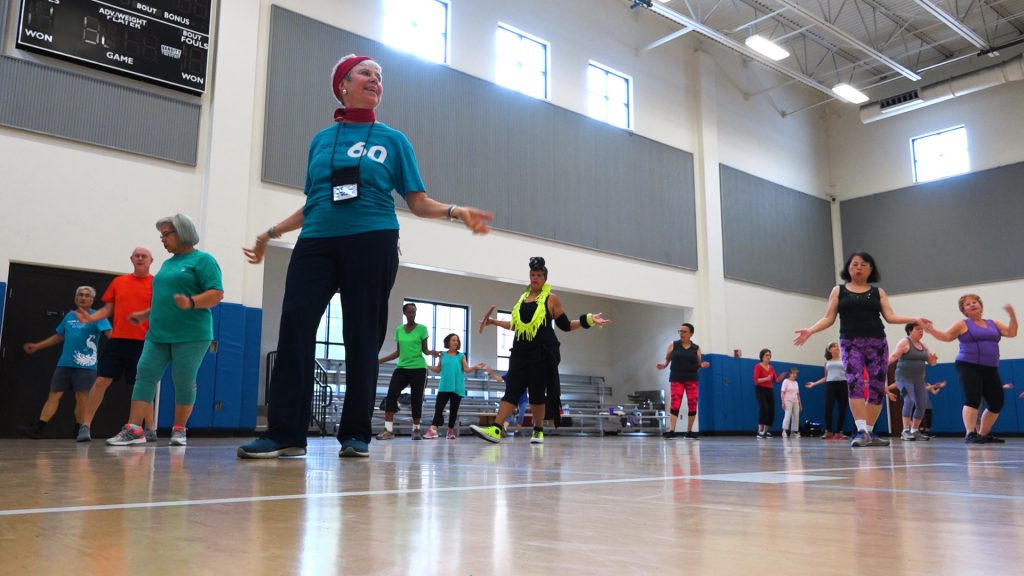Five Exercises for Improved Posture
Posted July 27, 2021 | By admin
We sit to watch TV. We sit to eat dinner. We sit in our car to get home. We sit at our work desk to check emails. We sit, sit again, and then sit some more.
With sitting can come bad posture, which affects our overall health and wellbeing. If we sit, stand, or lie in poor posture for any length of time, it puts stress on the muscles, joints and ligaments. This can cause pain and damage like back, neck and shoulder aches. According to Harvard Health Publishing, the three surprising risks of bad posture include heartburn, incontinence and constipation – all things we want to avoid. In this article, I share the science behind good posture and bad posture, and detail five exercises you can do to wear a better stance everywhere you go.
Good Posture versus Bad Posture
Good posture can be defined as a body that is balanced and efficient in movement. Bad posture tends to add excessive stress on muscles, ligaments, and bones. Think about it. Our body parts are connected.
The slouching, hunching, rounding forward of the neck and the overarching of the spine can lead to postural distortions in the spine, hips, and shoulders.
Ideally, someone with good posture will have balance from left to right and front to back. Take a careful look at the “lateral view” illustration below.

However, with good posture, you can still experience postural distortion patterns like Upper-crossed syndrome (UCS), Lower crossed syndrome (LCS) and a rounded low back/pelvis.
UCS can be described as weak neck muscles (front) and mid-back muscles with tight upper back muscles and chest. LCS can be defined as a weak abdominals and glutes with tight muscles in the lower spine and hips.

Kyphosis can be described as muscles in front of the upper body that are tighter than those in the back. Lordosis is described as tight muscles in the low back, stiff groin or hip flexors, and arch in your back otherwise known as a pelvic tilt. See the illustration below.

Let’s dive deeper into kyphosis, illustrated above. When your head moves in front of the body, it adds additional pressure to the spine. This makes skeletal muscles press down on your diaphragm, which makes it difficult to breathe. So, let’s get started on five exercises to improve your posture.
1. “Ready the Spine” Exercise
In Deskbound, Kelly Starrett provides a sequence of steps to “ready the spine.” To stabilize the spine, he starts off by recommending the individual lay on a flat surface (e.g., bench, floor or bed) and complete the following steps:
- Lie with your palms up and squeeze your glutes.
- Feel your pelvis pull upward.
- Relax your glutes and bend your legs.
- Place your hands on your belly.
- Take a breath in through the nose/belly.
- Watch your hands rise and fall, based on breath.
- Exhale as you normally would.

The first couple of steps are to reset the pelvis. The last step will be to practice breathing from the belly. Don’t be surprised if you find yourself doing this in a yoga class!
But if you don’t make that class, try to “ready the spine” once a day for few minutes.
Specific exercises to consider involve mobilizing joints that are intended to be mobile—neck, shoulders, thoracic spine, hips, and ankles.
2. Stiff Neck Exercise
To mobilize the neck, start by crossings your hands behind your back. This can be done in a seated or standing position. Tilt your head back so that your eyes are looking up to the ceiling and bring your head back down. For those who struggle with a forward-learning head posture, this exercise isis perfect for strengthening the extensors in the back of the neck.

3. Wall Slides
Mobilize the shoulders by performing these Wall Slide exercises, which involve your arms against a wall or on the floor to keep your shoulders pushed back and your body in good posture. Rest your arms up against a wall and place your elbows at a 90-degree angle. Then move up and down the wall while keeping your shoulders back.

4. T-Spine Rotations
To mobilize the thoracic spine, start on a flat surface (e.g. bench, floor, or bed). Lie on your side with your knees at a 90-degree angle to one side of the body. Place your hands together with your palms facing each other. After taking a deep breath, lift the top hand and place it on the opposite side of the body palms up. After holding for a couple seconds, bring the top hand back to the other hand as shown below.



5. Bridges or hip lifts
To mobilize the hips, start on a flat surface (e.g., bench, floor, or bed) lying with the knees slightly bent. Place your hands at your sides with your palms facing down. Drive your hips up and forward by squeezing your glutes. Once you reach to the top of this movement slowly lower your hips back down to the surface. This exercise is important to help with activating the posterior chain of the body.
About the Author

Bri-Ana Johnson is a fitness specialist and personal trainer at the Crosby Wellness Center in Winter Park, FL. She is a graduate of the University of Central Florida (UCF) with a Master of Science degree in Kinesiology. During her tenure at UCF as a teaching associate, she led a personal fitness course for undergraduate students. She has conducted and participated in research for Exercise Science. Her experiences as an athlete and student have driven her to become a certified personal trainer through the National Strength and Conditioning Association. In her leisure, Bri-Ana enjoys being a basketball coach at the middle and high school level.
Take Your Wellbeing a Step Further with These Related Resources from the Wellbeing Network
Learn: Heading Back to the Gym? Tips for Maximizing Recovery Post-Workout
Engage: Get the Most of Your Workout
Inspire: Never Stop Moving



